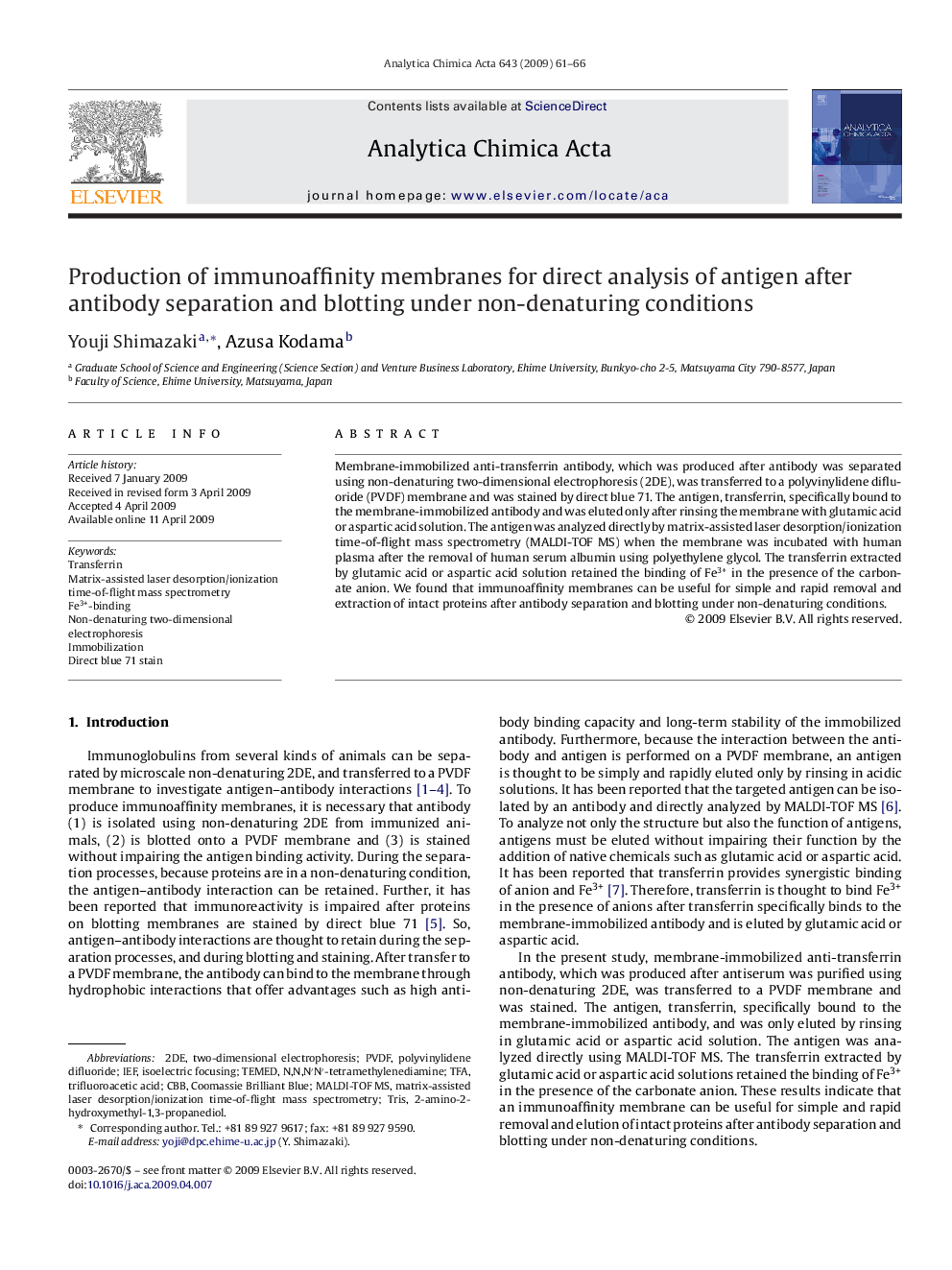| Article ID | Journal | Published Year | Pages | File Type |
|---|---|---|---|---|
| 1168688 | Analytica Chimica Acta | 2009 | 6 Pages |
Abstract
Membrane-immobilized anti-transferrin antibody, which was produced after antibody was separated using non-denaturing two-dimensional electrophoresis (2DE), was transferred to a polyvinylidene difluoride (PVDF) membrane and was stained by direct blue 71. The antigen, transferrin, specifically bound to the membrane-immobilized antibody and was eluted only after rinsing the membrane with glutamic acid or aspartic acid solution. The antigen was analyzed directly by matrix-assisted laser desorption/ionization time-of-flight mass spectrometry (MALDI-TOF MS) when the membrane was incubated with human plasma after the removal of human serum albumin using polyethylene glycol. The transferrin extracted by glutamic acid or aspartic acid solution retained the binding of Fe3+ in the presence of the carbonate anion. We found that immunoaffinity membranes can be useful for simple and rapid removal and extraction of intact proteins after antibody separation and blotting under non-denaturing conditions.
Keywords
Related Topics
Physical Sciences and Engineering
Chemistry
Analytical Chemistry
Authors
Youji Shimazaki, Azusa Kodama,
